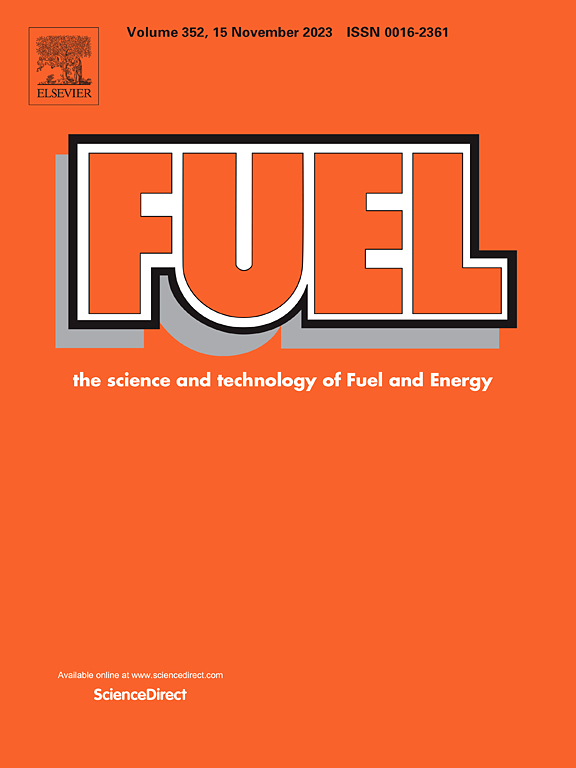Pyrolysis of coal and biomass in a fixed bed with internals to produce volatiles with respectively enriched light and heavy fractions
IF 6.7
1区 工程技术
Q2 ENERGY & FUELS
引用次数: 0
Abstract
Achieving respective enrichment of light and heavy fractions in fuel pyrolysis poses a significant challenge. In this study, we devised the regulation of pyrolysis reactions in a fixed bed with internals (internals-regulated pyrolysis) to allow progressive pyrolysis using Shenmu coal, Naomaohu coal, walnut shell biomass, and corn stalk biomass as feedstocks, thus achieving the respective collection of volatiles at different stages of pyrolysis. During the initial stage of pyrolysis, it produced pyrolysis oil rich in light species, although without using any catalyst. The fraction with boiling points below 350 °C was over 82 wt%, being actually higher than the usual values obtained in catalytic upgrading. In the late stage of pyrolysis, the produced oil contained more heavy species. It was found that the furans and phenols with relatively low and high boiling points were enriched in the initial and late stages of biomass pyrolysis, respectively. The efficient enrichment is achieved under the conditions of different feedstock types, heating temperatures and bed thicknesses, demonstrating the universality of enrichment approach. The light oil yield based on the Gray-King method is 59 wt% for catalytic cracking of oil rich in heavy fraction and 54 wt% for catalytic cracking of all oil components, highlighting the essential requirement for selective cracking of heavy species using the newly developed approach.
煤和生物质在固定床内裂解,产生分别富集轻馏分和重馏分的挥发物
在燃料热解过程中实现轻馏分和重馏分的富集是一个重大挑战。在本研究中,我们设计了在固定床内调节热解反应(内调节热解),以神木煤、直毛湖煤、核桃壳生物质和玉米秸秆生物质为原料,实现了热解不同阶段挥发物的分别收集。在热解初期,虽然没有使用任何催化剂,但产生了富含轻质物质的热解油。沸点低于350℃的馏分超过82wt %,实际上高于催化升级中通常得到的值。在热解后期,产出油中重质组分较多。研究发现,沸点较低的呋喃和沸点较高的酚类物质分别在生物质热解初期和后期富集。在不同的原料类型、加热温度和床层厚度条件下均实现了高效富集,表明了富集方法的通用性。基于Gray-King方法的轻质油收率对于富含重质馏分的油的催化裂化为59 wt%,对于所有油组分的催化裂化为54 wt%,突出了使用新开发的方法对重质组分选择性裂化的基本要求。
本文章由计算机程序翻译,如有差异,请以英文原文为准。
求助全文
约1分钟内获得全文
求助全文
来源期刊

Fuel
工程技术-工程:化工
CiteScore
12.80
自引率
20.30%
发文量
3506
审稿时长
64 days
期刊介绍:
The exploration of energy sources remains a critical matter of study. For the past nine decades, fuel has consistently held the forefront in primary research efforts within the field of energy science. This area of investigation encompasses a wide range of subjects, with a particular emphasis on emerging concerns like environmental factors and pollution.
 求助内容:
求助内容: 应助结果提醒方式:
应助结果提醒方式:


